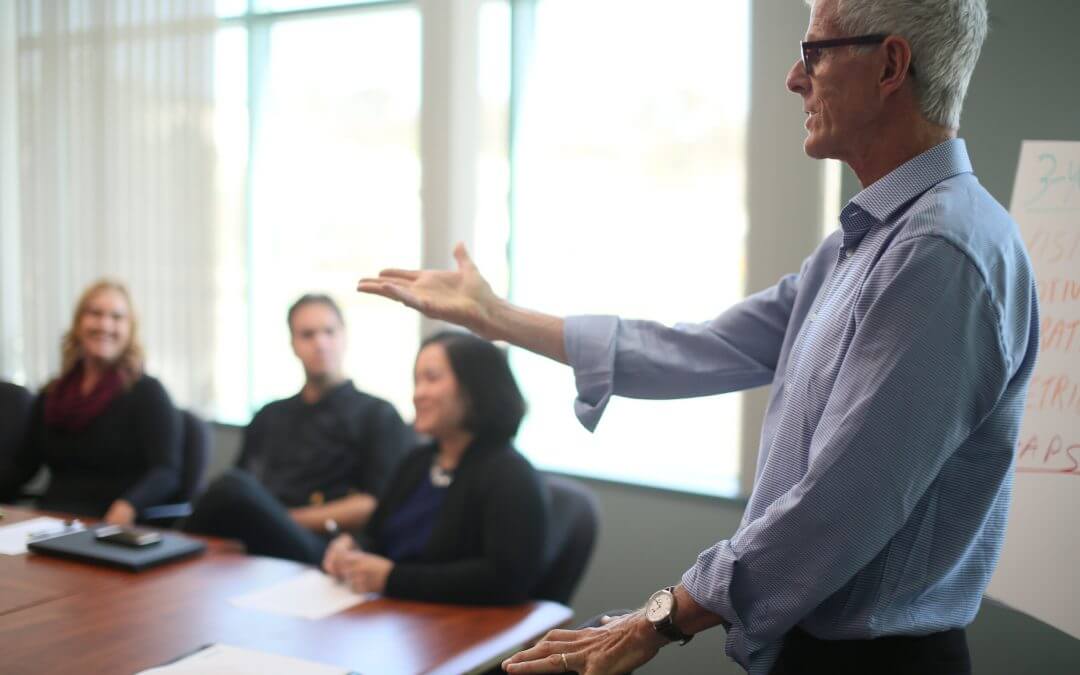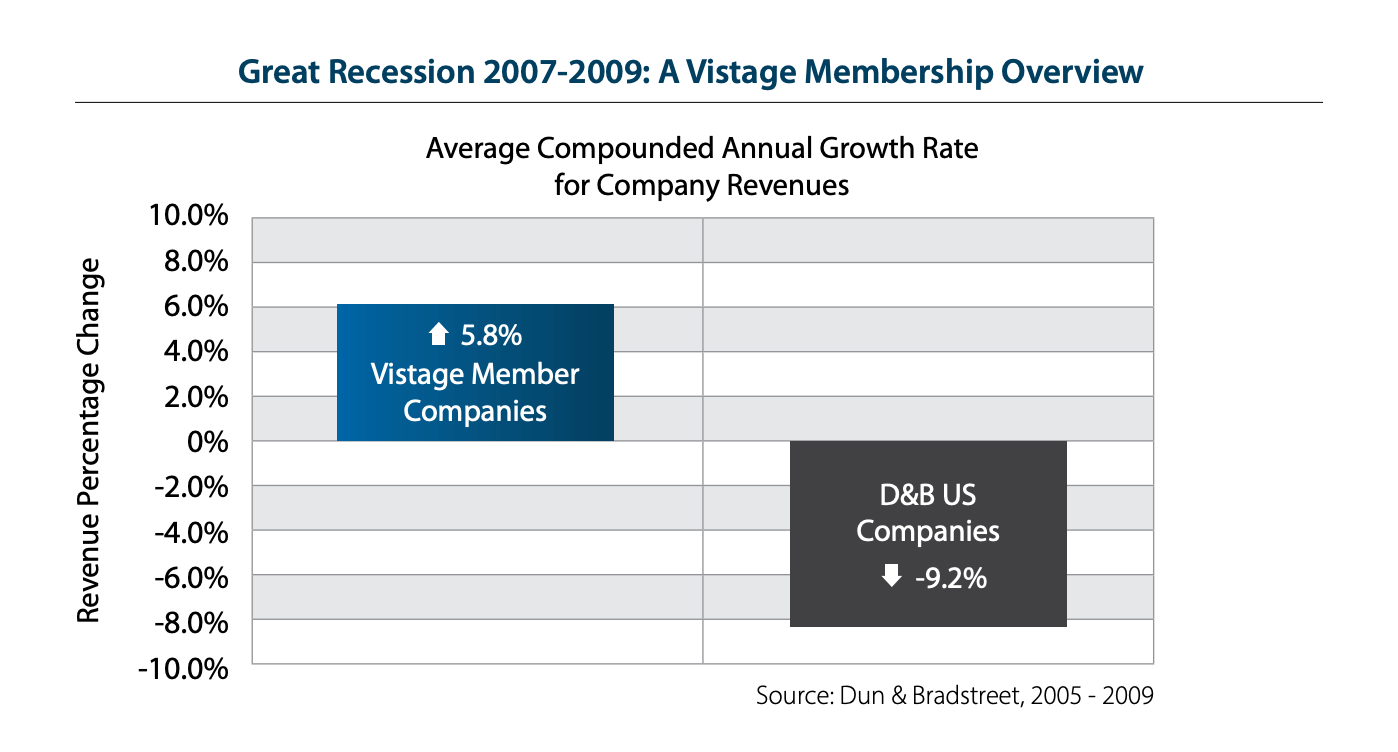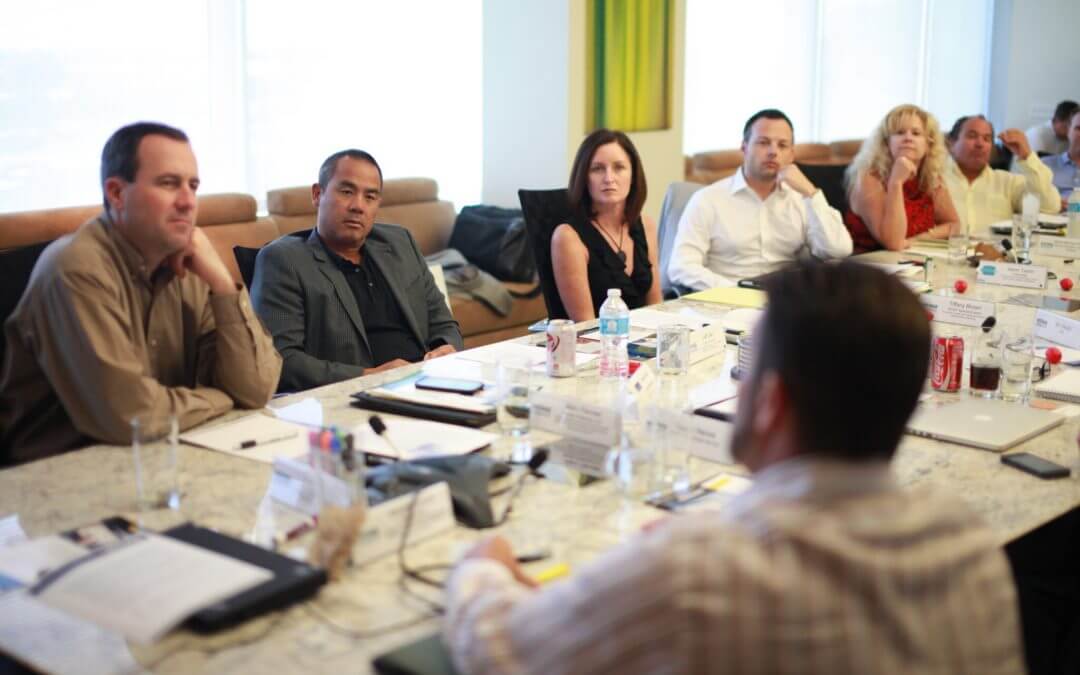The EOS Model® provides a useful foundation for businesses, but it falls short in addressing key aspects of creating an growth. By incorporating additional elements from the Gravitas 7 Attributes of Agile Growth® model, businesses can create a more comprehensive system that promotes growth while maintaining smooth operations. Focusing on Leadership, Strategy, Execution, Customer, Profit, Systems, and Talent, the 7 Attributes of Agile Growth® offer a more encompassing approach to achieving success.

You Need a Peer Group, NOW!
In 2007 the recession hit, and at the time, a partner and I owned a mergers and acquisition boutique that we had built up over three years. In December 2006 we closed our biggest deal yet and had a full pipeline as we moved into 2007. Then things started drying up, and by Q4, there was nothing. Looking into 2008, we figured a few deals would come back to life, but that was not to be the case.
As my partner and I talked through options to save the company and keep us moving forward, we exhibited some of the five dysfunctions of a team. We discussed some hair-brained ideas, including doing what we had done before, but just with more considerable effort. None of the ideas worked, and looking back; we weren’t thinking things through, looking at new markets, and holding each other accountable. Then we did what most of us do when stressed; we fell back doing the things with which we are most comfortable. My partner distracted himself with an executive Ph.D., and I, who was already distracted with the recent death of my mother, my divorce, and my children’s custody, reverted to doing financial analysis and modeling. These distractions enabled us to convince ourselves that we were swamped, which we were, but were not moving the company forward.
I did manage to get us some consulting work, but It was not until 2011, after joining a Vistage group, that we were back on track. However, looking back at that time, I would have given anything to be in a Vistage group from 2006. I needed a group of Peers to:
-
Challenge my thinking and assumptions;
-
Force me to accept what was happening and look for new opportunities;
-
Push me and hold me accountable for commitments;
-
Make me realize what I was doing was ineffective;
-
Challenge me about my concepts of the future and the status quo; and
-
Make me express my vision and strategy.
Not only that, but a Vistage group through its great speakers provides education on so many fronts that there is always something to learn.
As I reflect on this, it reminds me of a moment in 2004 when a Vistage Chair came to see me and tell me about Vistage. I was an overconfident, arrogant, young business owner who believed he didn’t need “no stinking help!” As I said, fast forward several years, and when a second chair proposed joining Vistage, it was like “Throw me a lifeline, I am drowning.”
Few business owners and CEO invest in themselves because they are successful, don’t realize they have stopped learning, don’t think anyone can understand their business, and don’t have time. Over my career, I have worked across many industries, and with many companies and never found a business model I can’t understand. The most significant issue is the confusion is over the myriad of TLAs ( three-letter acronyms) that a unique to a company and industry.” However, remember, as Marshall Goldsmith said, “What Got You to Here, Won’t Get You to There.” Regarding the lack of time, we all find time for what we deem essential. If learning and improving yourself and your business are a priority, then you can find the time. Furthermore, if your business cannot survive for a day without, you are failing as a leader.
Today we are experiencing a variation of 2008’s crisis. Our success as a leader is determined by how we emerge from the disaster. Many will emerge batted and beaten, some will appear as they went in, on a form of autopilot, and then some will develop more robust and resilient, and in a market leadership position.
To make sure you are among the latter, you need to be a member of a Peers Group, i.e., a Vistage Group:
-
where the members’ only price for helping you succeed, is helping them achieve their success;
-
to challenge your assumptions and prevent hubris;
-
to hold you accountable for your commitments;
-
to provide resources to help you and your organization succeed.
My groups are currently meeting weekly to:
-
Provide Emotional Support and Mental Health – We take time to discuss how we are all doing What is happening in our lives, with our families. This discussion occurs before we get to business.
-
Provide Information and Support – The members are helping each other with finding community banks that will provide PPP funds. Helping refer new business to each other. Advising in the areas that are the key competency to the others.
-
Charting the route forward – questioning each other about what the future holds and how they will be successful in the future. Who to keep and let go to ensure they have the right resources in the future. What clients need attention or cultivation and which need to be “fired” as they are too expensive to keep.
-
Employee Care – How to deal with employee issues from hiring in a virtual world to firing. We are discussing how to bring the workforce back safely and avoid litigation. Other topics are how to compensate them for extra efforts, promote those that have risen to the occasion, and what to do with those in leadership positions who didn’t.
Bart Garvin, Owner, and President of Garvin Industries expressed the benefit of such groups, “Because we’re all human, every business owner or CEO has multiple blind spots. Those blind spots often give us a distorted perception of truth inside our company, and it’s all based on our past experiences. [The group] forces me to step outside my business and be intellectually honest about my blind spots so I can change them.”
Looking back at the Great Recession, Vistage Member Companies outperformed their peers, as shown below. Vistage members grew revenue by 5.8%, while non-Vistage members saw a 9.2% decline. Many ask, “Is it the Chair, the peer advisory, the insight, the outside perspectives, the tools, the resources, the research, the speakers, the decision model……?” No, it is all of them in a group like Vistage.

A peer group is not an expense, but an investment and one, similar to a gym, if you go and use correctly, will pay huge dividends. Do you want to be a company represented on the left or the right of the above graph? Now is the time to get involved and push to make you and your organization stronger. Leave it too long, and those who do will have leapfrogged over you. If you want to learn more, contact me.
Copyright (c) 2020, Marc A. Borrelli
Recent Posts
EOS is just that, an Operating System
What has COVID done to Company Culture?
COVID has affected everyone. However, companies need to examine if they have lived their core values during COVID, how they are reinforcing them in a WFH environment, and especially with the onboarding of new hires.
Profit ≠ Cash Flow
Knowing how much cash you generate is essential for planning for growth. Too many companies don’t know and when they grow they find they are continually running out of cash. Understand your cash flow generation and how to improve it through improvements in your Cash Conversion Cycle and using the Power of One.
What Are Your Critical and Counter Critical Numbers?
The key to achieving long term goals is to define short term goals that lead you there. Focusing those short term goals around a key metric is essential. However, ensure that the metric will not lead other areas astray by having an appropriate counter critical metric act as a counter balance.
Rethinking ‘Family’ Culture in Business: Fostering Performance and Success
Explore the importance of company culture and the potential pitfalls of adopting a “Family” culture in organizations. Learn how to foster a high-performance culture while maintaining key family values and discover success factors for family businesses. Rethink the “Family” culture concept and create a thriving environment for your organization.
Do You Truly Know Your Core Customer?
Knowing the profit of your core customers is key to building a growth model. Many companies have identified core customers that are generating a sub-optimal profit and so they cannot realize the profits they seek. Identifying the correct core customer allows you to generate profits and often operate in “Blue Ocean.”
The Spectacular Rise and Fall of the European Super League
The European Super League (ESL) collapsed within 48 hours of its announcement due to hubris, a lack of value creation, and fan backlash. The founders’ arrogance led them to disregard European football’s deep-rooted traditions and culture. At the same time, the focus on wealthy club owners instead of merit undermined the essence of the competition. The fierce backlash from fans, who felt betrayed by their clubs, demonstrated the importance of prioritizing supporters’ interests in football.
When Should I Sell My Business?
Many business owners want to sell at the top of the market. However, market timing is tough. Is this the best strategy? Probably not.
Does Your Financial Model Drive Growth?
Working with many companies looking to grow, I am always surprised how many have not built a financial model that drives growth. I have mentioned before a financial model that drives growth? Here I am basing on Jim Collin's Profit/X, which he laid out in Good to...
COVID = Caught Inside
As we emerge from COVID, the current employment environment makes me think of a surfing concept: “Being Caught Inside When a Big Set Comes Through.” Basically, the phrase refers to when you paddle like crazy to escape the crash of one wave, only to find that the next wave in the set is even bigger—and you’re exhausted. 2020 was the first wave, leaving us tired and low. But looking forward, there are major challenges looming on the horizon as business picks up in 2021. You are already asking a lot of your employees, who are working flat out and dealing with stress until you are able to hire more. But everyone is looking for employees right now, and hiring and retention for your organization is growing more difficult.











